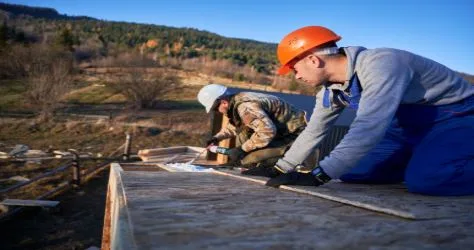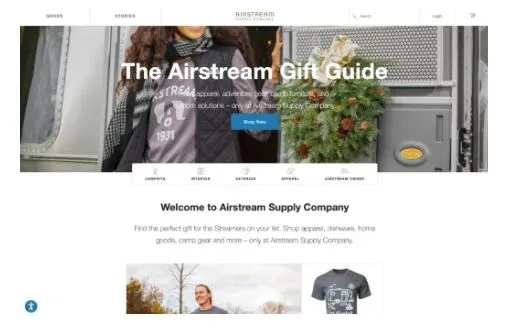Blueprints to Benchmarks: A 2025 Playbook for Construction RTOs to Design Assessment-First Training
The construction industry never stands still. New building methods, sustainability targets, safety technologies, and changing regulatory expectations mean Registered Training Organisations (RTOs) must constantly tune what—and how—they teach. With the refreshed Standards for RTOs on the horizon and employers demanding graduates who can “hit the ground running”, 2025 is the year to pull your training back to first principles: design from assessment backwards, build robust workplace simulations, and orchestrate resources that make competence visible on site, not just on paper.
If you deliver CPC qualifications, that shift starts with choosing cpc rto resources that map cleanly to units, performance evidence, and realistic job tasks. Done well, an assessment-first approach streamlines delivery, prevents audit headaches, and makes your learners production-ready faster—without over-promising outcomes.
Assessment-first isn’t a slogan; it’s a practical design method. Begin by clarifying the end state: what must a competent worker demonstrate at Level 3 or Level 5 in your CPC streams? What does “able to set out and pour a slab” look like in a real workplace—tools, tolerances, sequence, and safety decisions under time constraints? Once those “moments of truth” are defined, work backwards to create learning experiences, simulations, and formative checks that build towards the summative tasks learners will complete under controlled conditions.
Of course, this is hard to do from scratch every term. Curating the right RTO Materials—from assessment kits and learner guides to mapping documents and workplace evidence records—lets your trainers focus on coaching and contextualisation rather than chasing paperwork. The magic lies in orchestration: aligning every resource to a clear skill pathway and a defensible assessment plan.
Part 1 — Assessment-First Design, Step by Step
1) Define the critical tasks and the “acceptable variation”
List the authentic work tasks for each unit (e.g., setting out, erecting formwork, placing reinforcement, pouring and finishing, stripping and curing). For each, state:
- Conditions: site constraints, tools, PPE, drawings/specs.
- Standards: tolerances, finish, safety and environmental controls.
- Acceptable variation: where judgment is allowed (e.g., alternative bracing method) versus non-negotiables (e.g., fall protection).
This clarifies your “construct of competence”—what your assessors are really judging.
2) Map performance evidence to observable behaviour
Convert performance criteria and knowledge evidence into observable behaviours and artefacts. Example:
- “Reads and interprets drawings/specifications” → Observe: identifies datum points, explains fall direction, marks out correctly on site set-out.
- “Applies WHS” → Observe: conducts pre-start, selects appropriate PPE, isolates wet areas, uses safe lifting techniques.
3) Design summative assessments that mirror the job
Create task-grouped assessments. Instead of five tiny tasks, create one end-to-end simulation (e.g., form a simple slab) with checkpoints embedded. This reduces duplication, keeps evidence authentic, and decreases assessor cognitive load.
4) Backfill learning with formative “rehearsals”
Once the summative tasks are clear, plan scaffolded rehearsals:
- Micro-skills drills (e.g., tying reinforcement, using a laser level, calculating fall).
- Scenario decisions (e.g., “wind picks up—what changes?”).
- Peer-reviewed checklists to build self-assessment.
5) Build unambiguous marking guides
Write criteria your assessors can use consistently:
- Observable action (“positions vapor barrier without punctures”).
- Quality threshold (“no gaps >10 mm at laps”).
- Safety gate (“work halted if exclusion zone not established”).
6) Stress-test assessment conditions
Test for feasibility (time, materials, risk), sufficiency (enough evidence across elements/PCs), and audit-readiness (mapping, reasonable adjustments, and versions). Pilot with one class, capture assessor notes, and iterate.
Part 2 — Orchestrating Resources Without Overload
RTOs drown in documents. The solution is a lean portfolio aligned to your assessment plan:
- Assessment Kit: brief, instruments, context, observation checklists, knowledge test, mapping.
- Learner Guide: curated reading with diagrams, “show-me” sequences, and calculation walkthroughs.
- Job Cards & SOPs: one-page “on the tools” prompts for rehearsals and workplace learning.
- Workplace Evidence Pack: supervisor verifications with clear guidance to avoid generic signatures.
- Contextualisation Notes: your “local” amendments to reflect materials, climate, or methods.
Keep each artefact short and purposeful; redundancy invites version drift and audit risk.
Part 3 — Making Construction Learning Tangible
Use “measurement moments”
In construction, measurement (levels, falls, volumes) is competence. Build “measurement moments” into every session:
- Learners calculate quantities and tolerances before hands-on.
- Trainers set surprise checks (“what’s the fall over 5.6 m if the ramp rises 400 mm?”).
- Assessment includes explain-back—not just “do”, but “how did you verify?”.
Simulate real constraints
Authentic jobs are messy. Introduce controlled constraints:
- Limited time slot before the concrete truck arrives.
- Material substitutions (available reinforcement sizes).
- Weather changes triggering WHS decisions.
Emphasise tooling fluency
Tools are an RTO’s second curriculum. Build mastery sequences for:
- Levels/lasers, compaction equipment, screeds.
- Formwork systems (modular vs. stick built).
- PPE and exclusion systems, with practice in set-up and dismantle.
Part 4 — Compliance by Design (Not as a Patch)
Audits fall over on two things: insufficient evidence and inconsistent assessor judgment. Bake compliance into your design:
- Traceability: Every observation point maps to performance criteria and knowledge evidence. Your mapping table is short and precise.
- Consistency: Assessor guides include exemplars, photos, and failure modes (“common defects to watch for”).
- Reasonable adjustment: Clear options that protect the validity of evidence (e.g., oral questioning with visual aids for LLN needs) and are documented.
- Version control: A single source of truth with dated releases and change logs; learners and assessors always work from current versions.
- Industry input: Minutes or notes showing consultation with builders/supervisors—validate your “construct of competence”.
Part 5 — Trainer Workflows That Actually Scale
1) One weekly “assessment huddle”
A 20-minute meeting where trainers review:
- Upcoming summative tasks and material needs.
- Any contextualisation for specific cohorts or workplaces.
- Marking guide clarifications and edge cases encountered.
2) Defect library
Keep a shared photo library of defects and excellent work. Trainers tag examples against criteria. This aligns judgments and enriches feedback for learners.
3) Back-of-house analytics
Track completion vs. competence, not just attendance. Metrics:
- First-time pass rate per task cluster.
- Average rework items per student (and per criterion).
- Time-to-competence highlights where teaching needs a new scaffold.
4) Two-speed support
Offer quick “5-minute clinics” for micro-skills (e.g., tying stirrups efficiently) plus scheduled “deep dives” for tricky concepts (e.g., interpreting bracing details). This reduces fall-behind without blowing timetables.
Part 6 — Contextualising Without Breaking Validity
Contextualisation is essential in CPC, but it can accidentally delete required evidence. Use this three-rule guardrail:
- Same competence, different skin: Change contexts, not the underlying skill (e.g., timber vs. steel formwork, but same set-out and tolerance).
- Same difficulty: Do not simplify to the point where performance evidence is under-represented.
- Document the why: Log what was contextualised and why (materials, climate, regulations) so an auditor sees deliberate design, not drift.
Part 7 — LLN, Safety, and Sustainability Are Skills, Not Sidebars
LLN embedded in the task
- Reading drawings and specs is explicit evidence. Include short “read-then-do” checks.
- Numeracy is assessed through layout, volumes, and falls; collect working as evidence (not just the final pour).
Safety as an assessment gate
- Use pre-start briefs as assessed artefacts.
- If safety controls aren’t established, the task pauses; that’s a competence signal.
Sustainability as everyday practice
- Require waste-minimisation plans and material reuse opportunities.
- Evidence proper washout and run-off control, not just talk about it.
Part 8 — Building a Culture of Feedback
- Two-way assessment: After each summative task, learners reflect on what went well, what defect they caught early, and what they’d change on a live site.
- Assessor calibration logs: Quick notes on any borderline calls become training assets for the next cohort.
- Industry validation moments: Invite site supervisors to observe or comment on simulation set-ups once per term; build their feedback into your versioned docs.
Part 9 — The 90-Day Implementation Sprint (Practical Plan)
Weeks 1–2: Discovery
- Audit current resources against units with a red/amber/green map.
- Interview trainers to find friction points and common learner defects.
- Select one qualification stream (e.g., formwork & slab units) for a pilot.
Weeks 3–5: Design
- Draft assessment-first plan: task groups, conditions, evidence artefacts.
- Write marking guides with photo exemplars and common failure modes.
- Outline scaffolds for rehearsals (micro-skills, scenarios, measurement moments).
Weeks 6–7: Orchestration
- Consolidate your lean portfolio (assessment kit, mapping, learner guide, job cards, workplace evidence pack).
- Version and date everything. Build a simple change log.
Weeks 8–9: Staff enablement
- Run the first assessor calibration using sample videos/photos.
- Set up the defect library and “assessment huddle” cadence.
Weeks 10–12: Pilot and refine
- Run the pilot with one cohort. Capture timings, materials used, defects, and rework.
- Iterate quickly on instructions and marking clarity.
- Log contextualisation choices and their rationales.
By the end, you’ll have an assessment-first blueprint you can scale across your CPC scope.
Part 10 — Common Pitfalls (and Easy Fixes)
- Too many micro-assessments → Merge into end-to-end tasks; keep evidence authentic.
- Vague criteria → Replace “works safely” with explicit checks: exclusion zone marked, PPE used correctly, spotter in place, etc.
- Evidence bloat → Keep what proves competence; cut duplicate forms.
- Trainer time squeeze → Use job cards and rehearsals to push practice earlier so summatives run smoothly.
- Contextualisation creep → Re-validate against performance evidence every term.
FAQs
Q1: How do we balance workplace evidence with simulated tasks for CPC units?
Use workplace evidence to supplement, not substitute, your controlled summative tasks. Simulations guarantee conditions and safety; workplace evidence confirms transfer. Provide supervisors with targeted, criterion-based verification (not generic signatures).
Q2: How often should we recalibrate assessors?
At least once per term and any time you update instruments. Use your defect library and a set of anonymised student artefacts to practice consistent decisions.
Q3: What’s the best way to embed numeracy without scaring learners?
Make numeracy instrumental: quantities, falls, volumes, tolerances—all within the job card. Use small, high-frequency checks and reward correct methods, not only answers.
Q4: We have mixed cohorts (apprentices and career-changers). Can one assessment plan serve both?
Yes—keep the same summative but vary scaffolding. Provide optional rehearsals, additional demos, or peer coaching for those with less site exposure. Maintain standards; adjust the path to reach them.
Q5: How can we demonstrate continuous improvement to auditors?
Keep a concise change log tying version updates to evidence (pilot data, industry feedback, assessment huddle notes). This proves compliance by design—not just paperwork.
Q6: What evidence convinces industry our graduates are job-ready?
Showcase task-grouped assessments with photo/video artefacts, measurement records, and defect-fix logs. Employers recognise authentic workflow more than a stack of forms.
Q7: What if a learner is competent but anxious in assessments?
Offer a brief warm-up rehearsal that mirrors the first ten minutes of the summative. Anxiety usually stems from uncertainty about sequence and pacing. Maintain assessment integrity while reducing friction.
Q8: How do we keep resources current without constant re-writes?
Adopt a modular structure. When codes, materials, or methods change, update the relevant module (e.g., bracing detail sheet) and bump the version across the pack. Avoid hard-coding specifics into every page.
Q9: How much simulation is “enough”?
Use a risk-based approach. High-risk or infrequent tasks deserve deeper simulation. Ensure all performance evidence is covered across your task groups, and that conditions are realistic.
Q10: Any quick wins for the next intake?
Start a 20-minute assessment huddle, launch a photo-based defect library, and embed two measurement moments in every practical session. These three moves lift quality immediately.
Assessment-first training isn’t about more paperwork; it’s about making competence obvious, repeatable, and defensible—on site and at audit. If you want to see how an assessment-led plan comes together in practice, explore our guide to rto assessment tools and start mapping your next cohort’s journey from blueprints to benchmarks.





